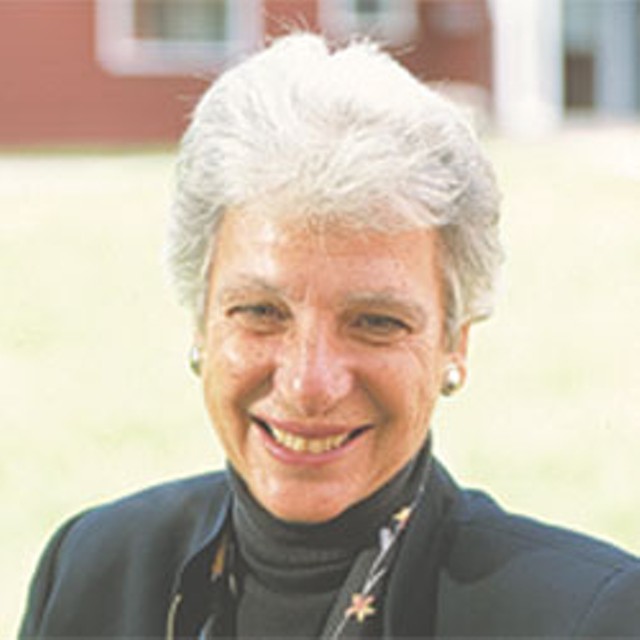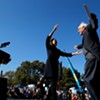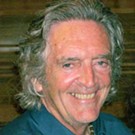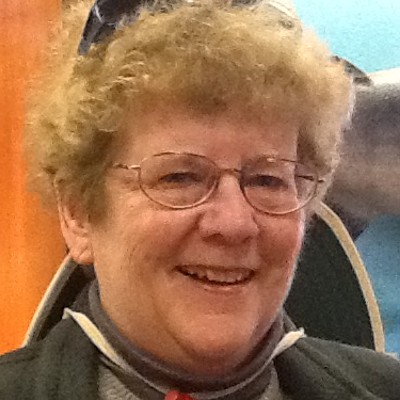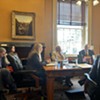Published August 18, 2010 at 10:48 a.m. | Updated September 16, 2016 at 3:21 p.m.
The price of an American liberal arts education continues to soar. But, in return for the $50,000 or more that many are collecting per student per year, do colleges need to offer better value in what they’re teaching? Yes, says Bennington College president Elizabeth Coleman. Like the University of Chicago’s Allan Bloom 20 years ago, but in a more progressive vein, she has agitated academia with her searing attack on the quality of liberal arts education in the United States.
Coleman’s critique of higher-ed institutions as narrow-minded promoters of civic passivity wins general endorsement from her colleagues at the University of Vermont, Champlain College and the Vermont State Colleges system — even as they hasten to absolve their own schools of the failings excoriated by Bennington’s 72-year-old provocateur.
Coleman cuts an impressive figure in the video of the closing speech she delivered at the February 2009 conference of TED, a nonprofit that promotes “ideas worth spreading.” Wearing a black pant suit and flowered scarf that offset her cropped white hair, she referred only occasionally to her notes in the course of a 19-minute polemic that clearly riveted her listeners and continues to rattle the U.S. educational establishment.
“The progression of today’s college student,” Coleman declared in the speech, which has attracted more than 15,000 views on YouTube, “is to jettison every interest except one, and within that one to continually narrow the focus, learning more and more about less and less — this, despite the evidence all around us of the interconnectedness of things.”
Coleman told attendees of the California conference — which was also addressed by Al Gore and Bill Gates — that “over the past century, the expert has dethroned the educated generalist to become the sole model of intellectual accomplishment.” She further decried higher education’s “increasing emphasis on the technical and obscure,” even as “mastery of basic skills and a bare minimum of cultural literacy eludes vast numbers of our students.”
One result has been a learned helplessness on the part of the U.S. citizenry, a paralysis of the body politic brought on by chronic ignorance, Coleman thundered. More than half of Americans don’t believe in evolution, she noted, adding that many of those who do don’t actually understand it. America was “impotent” to stem genocide in Rwanda and Darfur, while on the home front there has been acquiescence to the “shredding of the Constitution, the unraveling of our public institutions, the deterioration of our infrastructure,” along with “a harrowing predilection for the uses of force.”
Because “genuine liberal arts education no longer exists” in the United States, the field has been left clear for fundamentalists to promulgate “the absolutes of a theocracy,” Coleman asserted.
The Bennington president mentioned the exhilaration that followed Obama’s election just a few months before her speech, but warned that genuine change could not occur without the engagement of the public. “President Obama and his team simply cannot do it alone,” Coleman presciently suggested.
Liberal arts education is supposed to instill “an enhanced capacity for civic engagement,” she went on, but today, “we, the people, have become inured to our own irrelevance when it comes to doing anything significant about anything that matters concerning governance, beyond waiting another four years ... There is no such thing as a viable democracy made up of experts, zealots, politicians and spectators.”
In keeping with her action-oriented manifesto, Coleman is not merely lamenting a sorry situation. She is “reinventing” Bennington as a model of a new type of liberal arts college that puts as much emphasis on deeds as on ideas.
Coleman’s radical approach is embodied in a $20 million Center for the Advancement of Public Action due to open next year on the 470-acre campus. It will be a physical focal point for a curriculum organized around six broad study topics: health, equity, education, the environment, uses of force and governance.
This is by no means the beginning of Coleman’s reforms; she’s been shaking things up since becoming president of the 78-year-old school in 1987. Bennington used to be stereotyped as a spendy and artsy place that attracted trust-fund bohemians. A decade ago, it was the most expensive college in the country, and it gained national attention in 2004 for a nude student protest against Coleman’s crackdown on student nudity.
More significantly, Coleman made news by abolishing Bennington’s tenure system, firing several professors and erasing divisions among academic departments. In addition to shattering shibboleths, those moves helped the college save money. With a total tab of $50,860 this year, Bennington no longer ranks even among the 10 priciest schools in the United States. Enrollment has risen to 664 undergrads and 144 graduate students. And, to be fair, Bennington does have a proud academic legacy, counting among its alumni the novelists Bret Easton Ellis and Donna Tartt (both of whom chronicled its more decadent days); the actor Alan Arkin; the food theorist Michael Pollan; and the painter Helen Frankenthaler.
UVM provost Jane Knodell agrees with Coleman’s call for an interdisciplinary liberal arts curriculum designed to motivate and equip students to become civic activists. And Knodell believes her own institution is in sync with those aims. About 60 percent of UVM’s 10,000-plus undergrads are enrolled in the College of Arts and Sciences, while the university’s schools conferring professional degrees in education, engineering and nursing have “strong liberal arts components,” Knodell says.
The provost also defends UVM’s new “spires of excellence” model as consistent with Coleman’s vision. She says the university’s decision to focus resources on three “transdisciplinary” fields of study — food systems; neuroscience, behavior and health; and complex systems — is rooted in the realization that “the ability to address social and economic problems comes not from more specialization but from making connections.”
As compelling as Coleman’s analysis — and that of Bloom before her — may be, it has not supplanted the issues that dominate debate on the direction of American higher ed, Knodell adds. Concerns about “access and affordability” remain at the top of the academy’s agenda, she notes. And Knodell further argues that, for all its inadequacies, the American higher-ed system continues to be the world’s best, as demonstrated by the thousands of students from other countries enrolled in U.S. colleges and universities.
Champlain College likewise takes an interdisciplinary approach to learning “similar to Bennington’s,” says Betsy Beaulieu, dean of the school’s Core Division. “We’re a career-focused institution, it’s true, but we’ve taken great strides to [be] more than that,” Beaulieu adds. Champlain focuses on “the whole student,” she says, placing priority on developing “the life of the mind.”
And, while she finds merit in some of what Coleman says, Beaulieu points out that current economic circumstances are only heightening the pressure on colleges and universities to prepare students for specific, seemingly stable careers. “Today’s generation of college students is very concerned about what their lives will be after they graduate,” Beaulieu observes.
Tim Donovan, chancellor of the Vermont State Colleges system, makes a similar point even as he enthusiastically endorses Coleman’s critique. “A liberal arts education in which no one is prepared for employment is equally as wrong” as the technically focused and overly specialized setup that Coleman is deploring, Donovan says.
Castleton, Lyndon, Johnson, Vermont Technical College and the Community College of Vermont all strive to provide “a broad-based education,” the chancellor adds. And wide-ranging knowledge, or at least curiosity, is increasingly essential for practical purposes, he notes, citing projections that the average student may have as many as seven or eight careers over a lifetime. “The ability to be continuously learning new things is more important than ever,” Donovan says.
It’s the responsibility of liberal arts schools to challenge students’ assumptions about themselves and about higher ed as primarily the path to a vocation, Donovan says. “Students need more than they think they need,” he finds, “and it can also turn out that they actually want more than they think they want.”
But does the educational establishment want more than it thinks it wants? In a Q&A session with Coleman, we learned she’s eager to challenge the received ideas of her peers.
Liz Coleman, as she’s listed on the TED website, is herself a product of elite liberal arts schooling, having earned a bachelor’s degree from the University of Chicago, a master’s from Cornell and a PhD from Columbia. A Shakespeare scholar, Coleman was a professor of humanities at the New School for Social Research in Manhattan, where she also served as dean of the College of Arts and Sciences.
Seven Days reached her by phone as she vacationed on Cape Cod.
SEVEN DAYS: I bet you were the product of a liberal arts education.
LIZ COLEMAN: I did my undergraduate work at the University of Chicago, which was a very powerful experience because it gave me an idea of what a liberal arts education could be.
SD: What was your major?
LC: I ended up working in a program called General Studies in the Humanities [now called Interdisciplinary Studies in the Humanities]. The overwhelming thrust of it was a broad-based and deep immersion in liberal arts.
SD: In your TED speech, you criticize higher ed in the United States for focusing too much on specific disciplines, for not being wide-ranging in its approach. Yet the Center for the Advancement of Public Action that you’re building at Bennington focuses on specific areas such as health, the environment and armed conflict. Isn’t that a contradiction?
LC: Those topics become the center of a broad curriculum, a way of organizing a curriculum. The focus is always on action.
What’s so striking about the way higher education is organized now is that with all our formidable resources, we can’t seem to get the job done. No one seems to be saying anything about the failure of higher education as having relevance to, a positive impact on, our quality of life.
SD: You say in your speech that liberal arts education no longer exists in the United States. But you’re exaggerating, aren’t you? Don’t Vermont schools like Middlebury and St. Michael’s offer their students a traditional liberal arts education?
LC: A lot of schools call themselves liberal arts colleges, including Bennington. But their curricula are indistinguishable from that of any major research university.
What’s one of the first things you asked me? What I majored in, right?
The liberal arts isn’t about majoring in anything. It’s about developing fundamental capacities, both ethical and intellectual. It’s about the arts, in the broadest sense. A liberal arts education asks appropriate questions about what it means to be human beings. It shouldn’t fragment into pieces across the educational landscape.
But liberal arts today is defined by whether you majored in physics or literature. Also, more and more colleges are offering business majors because that’s how they can attract more kids.
I mean it: Liberal arts no longer exist insofar as they have to do with what I said about building intellectual and ethical capacities.
SD: I doubt that schools like Middlebury or St. Mike’s would agree that they don’t provide a genuine liberal arts education. They probably don’t think they’ve failed in that regard.
LC: How do you account for the spectacular and rising focus on private interest and the specific lack of focus on the public realm among educated citizens in this country today?
Are St. Michael’s students capable of engaging the world better than graduates of a school like MIT?
SD: Probably not.
LC: I’m not talking about having no focus as part of a liberal arts education. The approach we’re developing at Bennington is highly integrated. The focus on health, for example, doesn’t eliminate other areas. You have to bring an enormous range of perspectives to it in order to succeed in that program.
SD: Are you saying that technical education, career-focused higher education, isn’t a good direction to take?
LC: A single consuming focus on careerism is not what higher education’s responsibilities to this society are. Don’t put me in an all-or-nothing place; that’s just cheap journalism.
Obviously, people’s material well-being is very important. But when it becomes the only thing that matters, democracy collapses.
My critique is not of professional schools, not about nursing schools, not about law schools.
I’m not talking about all of education; I’m talking about liberal arts education. Technical and professional schools are actually doing what they’re supposed to be doing; liberal arts education isn’t doing what it’s supposed to be doing.
In a democracy there are responsibilities of education that must not be defined in terms of a marketplace mentality. When economic self-interest is the only objective rather than the outcome, then something is very wrong. But of course the outcome of a good education should be that you’re able to flourish in the world.
SD: Isn’t the emphasis you place on civic action out of keeping with the traditional notion of liberal arts as allowing students to arrive at their own conclusions: to choose whether to act or not? And what about art for art’s sake? Shouldn’t a poet or a painter be able to live in a purely aesthetic, non-action-oriented way?
LC: What I’m talking about has to do with the responsibilities of citizenship. Civic action isn’t optional; it’s an obligation for citizens of a democracy.
As the president of a school with a long tradition of honoring art for art’s sake, I happen to have enormous respect for poetry and all the arts. But just because poetry can be an end in itself doesn’t mean the poet has no other obligations. A poet still has obligations as a citizen of a democracy.
I challenge the whole idea of a value-neutral education that you’re putting forward.
SD: You say there’s a lack of citizen activism in this country today. But what about the Tea Party? You probably don’t agree with what the Tea Party says, but it’s a genuine activist movement, isn’t it?
LC: Part of the problem with the Tea Party is that they don’t respect evidence or the exchange of ideas in debate, and those are fundamental principles. Democracy means being open and allowing those with views other than your own the right to speak. My criticism of the Tea Party is that they are not letting that happen.
It’s not about being conservative or liberal but about being antidemocratic. You have to allow for evidence to be discussed. Also, all politics are not equivalent.
SD: Isn’t it the case that a student would have to have a liberal political point of view in order to meet the standards you’re proposing for higher education?
LC: What I’m proposing is actually more conservative than liberal in its applications. My ideas are viewed as very conservative in educational circles.
SD: Don’t you think our current president has a liberal arts background? From Columbia? From Harvard?
LC: So what? It’s not just Obama, but also Bill Clinton who went to elite schools with liberal arts pedigrees, as, for that matter, did George [W.] Bush, though maybe getting Cs at Yale doesn’t qualify.
But all of them, when they talk about education, it’s always about what we need to do in order to be more economically competitive. We’ve poured billions of dollars into trying to get our kids to be better at math and science. It hasn’t gotten us anywhere as a society.
SD: How will Bennington make a difference?
LC: Look, a lot of people are troubled about what’s going on in the world. We’re making an effort to respond to the feeling that we’re not doing what we need to be doing on many, many fronts. The real challenge — not just for Bennington but for everyone — is: How do we respond effectively to these problems; how do we do the things that matter?
What we’re developing is intended to address all that.
SD: Does being a Vermont institution matter at all in the approach Bennington is taking?
LC: On one hand, Bennington is an institution of no place. It’s international; it exists on the web. But if you were to place a school like Bennington in any state in this country, it would be in Vermont.
The combination of being smart and innovative is the best of what Vermont is. It’s also what Bennington is at its best: innovative and intelligent.
More By This Author
Speaking of Back To School
-

Lt. Gov. Zuckerman Goes on a 'Banned Books Tour'
Sep 6, 2023 -

UVM Hillel Provides Shabbat Meal Kits With Student-Grown Vegetables
Aug 29, 2023 -

Heather Moore, New Executive Director of Shelburne Craft School, Is Learning on the Job
Aug 31, 2022 -

Vermont Officials Release Relaxed COVID-19 Guidance for the School Year
Aug 24, 2022 -

Back to School During Delta: A Pediatrician With Young Children Offers a Road Map — and Survival Strategies
Aug 24, 2021 - More »
Comments
Comments are closed.
From 2014-2020, Seven Days allowed readers to comment on all stories posted on our website. While we've appreciated the suggestions and insights, right now Seven Days is prioritizing our core mission — producing high-quality, responsible local journalism — over moderating online debates between readers.
To criticize, correct or praise our reporting, please send us a letter to the editor or send us a tip. We’ll check it out and report the results.
Online comments may return when we have better tech tools for managing them. Thanks for reading.



































